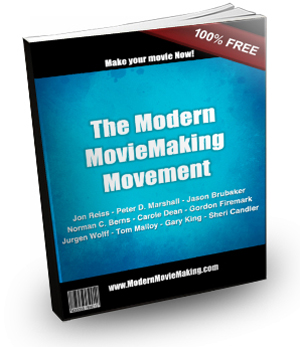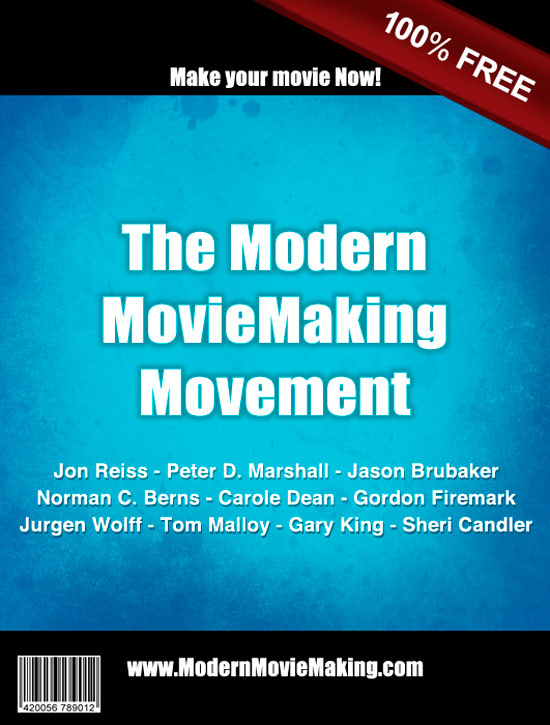Times HAVE changed. In many, many ways. But what we call Indie Film is an era gone by. The opportunity to create and connect has never been greater — and it means other changes are afoot. Jason Brubaker reached out to me with what I felt was an important idea, but like many I encounter, I was too busy to participate unfortunately.
Jason recognizes that filmmakers no longer need “discriminatory distribution” and can reach audiences with their work in new and different ways. But Jason also recognizes we need to share the info on how we do it. Most importantly, he recognizes this is a community effort. He has done a great service to our community and deserves our thanks. But I am going to let him tell you all about it with a guest post. Thanks Jason!

When I started out, getting a movie made seemed super impossible. Like
most independent filmmakers, I was inspired by the news of Kevin
Smith, Ed Burns and the other indie filmmakers who were finding
innovative ways to get movies made, seen and sold. These guys inspired
me to take action and gain experience. But instead of staring my
career in Los Angeles or New York City, I decided to produce a short
film in my hometown of York, Pennsylvania.
To accomplish this, I saved up all summer and bought a used Arri BL
16mm camera and a few rolls of film. I spent an entire weekend
producing my movie. And after buying some beer for the wrap party, I
promptly ran out of money. So for the next six months I worked to save
enough money to process the film and transfer it to video. I remember
coming home each night and gazing lovingly at three 400’ rolls of
exposed 16mm film presently collecting dust on my bedroom floor. This
was proof that I was indeed a filmmaker.
While I did eventually get the movie processed, transferred and edited
– I couldn’t help but feel a little disheartened. I mean, if it took
me a year just to finish a short, how long would it take to get a
feature made? To answer this question, I moved to New York City, where
I ended up working alongside the (then) twenty-something year old
entrepreneurial producer, Seth Carmichael. With Seth, I learned what
it took to make features. But I also learned of the next hurdle –
discriminatory distribution.
This was a time when most independent feature filmmakers based their
business on the Sundance Dream. “I’m going to make the movie, sell it
at Sundance and live happily ever after.” But the reality was, very
few filmmakers realized this dream. Instead, most traveled the
festival circuit to exhaustion. And in place of a dream distribution
deal, many of these filmmakers forwent money and relinquished their
rights for the mere validation that comes from seeing their titles on
the shelves at local video stores. “At least my movie made it to
Blockbuster.”
I eventually transferred to Los Angeles, where my team and I produced
our first feature, a silly zombie movie. As expected many traditional
distributors contacted us, offering crappy deals. And just prior to
losing all hope of income, we decided to set up shop in Amazon. At
first, none of the producers liked the idea. I mean, aren’t we
conditioned to believe that self-distribution sucks? But then we made
our first sale. We thought this was an anomaly. We had no movie stars,
our production value left a lot to be desired and most people on earth
had never heard of our title (including you.) But then we made another
sale… And then a dozen…
That was five years ago.
Since that time, it has become widely accepted that HDSLR camera
technology, crowdfunding and internet movie distribution marks the
democratization of independent filmmaking. But in order to prosper,
modern moviemakers must now master a whole new set of skills revolving
around audience engagement and one-off sales. And this creates some
questions. Namely, how the heck do filmmakers source a paying audience
large enough to justify a movie budget?
To help the answer these questions, I reached out to TEN of the most
inventive filmmaker thought leaders in the world and asked them to
share their best practices on how to survive and thrive. Suffice it to
say, the responses were overwhelming. I didn’t just receive a few
bullet-points, but I got over 100 pages of extremely NEW and extremely
valuable filmmaking information!
In organizing the material, I realized that what we had was more than
just another how-to filmmaking book. I mean, while many fundamentals
such as screenwriting, production and film finance obviously remain
essential to getting a movie made, the material also emphasizes new
strategies, like how to create a crowdfunding campaign, how to
leverage social media and how to sell your movie without the
middle-man. Because the information is useful, timely and modern, we
simply called it, The Modern MovieMaking Movement.
And this begs a new question: What does it mean to be a “Modern MovieMaker?”
While the philosophy is evolving, Modern MovieMaking is defined by an
era of entrepreneurial filmmakers who do not ask permission to make,
market or sell movies. Instead of making movies and hoping the movie
will get seen, picked up and sold through traditional distribution
channels, the modern moviemaker makes movies, directly engages with
the audience and builds community around his or her movie titles. In
releasing The Modern MovieMaking Movement, we also decided to do
something else revolutionary – the contributors all agreed to give the
material away, for FREE!
So if YOU would like to download a copy of The Modern MovieMaking
Movement, you can do so by visiting the official site:
www.ModernMovieMaking.com
Wishing you all the Modern MovieMaking success in the world!
—
Jason Brubaker is a Hollywood based Independent Motion Picture
Producer and an expert in internet movie distribution. He is focused
on helping YOU sell movies more easily by growing your fan base,
building buzz and creating community around your title. For more info,
check out Filmmaking Stuff, at: www.FilmmakingStuff.com






